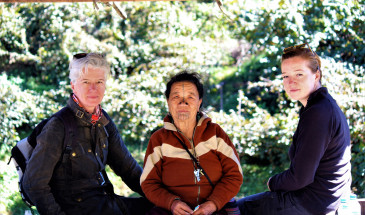Homestay in Northeast
- Overview
- Itinerary
- Map
- Pictures
Northeast is about its people so the best way to discover this region is to stay with its inhabitants.
They are the best ambassadors of their villages and hospitality hasn’t been learned in a Tourism School. Offering something a night in a hotel can never provide, they give you a real experience of local life. No one knows a place better than the local residents, and by staying with someone local you have access to the best information on the place. You will not find this in those guide books. Even online, most information on exploring a place is repetitive, as sites copy from each other, so trust your host to tell you where to go and what to do. Plus, homestay owners make it their business to know more about the local area so that they can point out shortcuts and scenic routes to their guests, making exploring all the more convenient.
Furthermore you will get to see your food getting prepared, even get a cooking class and finally enjoy a delicious meal made with love. The service is also more personalised, because they can afford to cater to the demands of their few guests.
Being generally cheaper than a hotel, your money goes for longer at a homestay, so you can afford that extra sightseeing excursion or trek that you might not have done if you were spending more on just accommodation. Instead of staying 1 night as planned, you might end up staying 3 or 4 days to enjoy the slow path of the countryside life.
Last but not least, by staying at a homestay, you are contributing to the livelihood of the local community. Though homestays have now become quite common and are available in more cosmopolitan cities as well, in places like Sikkim, Nagaland or Orissa, often these are the only stay options, and an easy and good way of earning for the host community. During the Hornbill Festival in Nagaland, for instance, a large section of the local community depends entirely on tourism for their living. Often, you also end up buying handicraft from local artisans that your hosts may point to and, best of all, return and spread the good word around. It’s a great way of giving back to the chosen place of your travel.
No details found.




